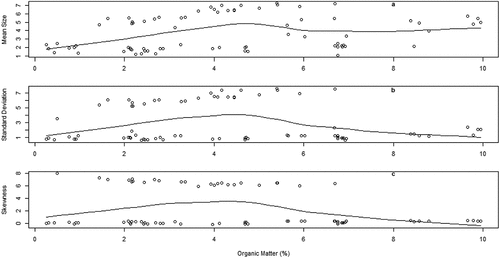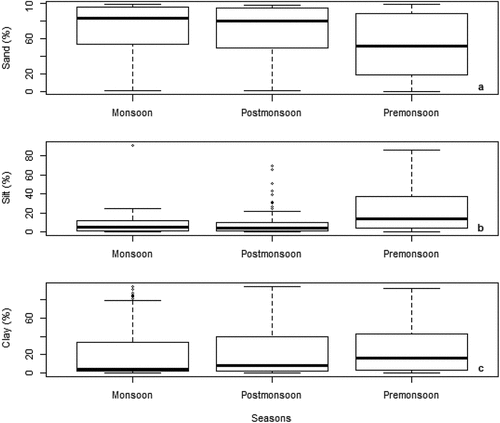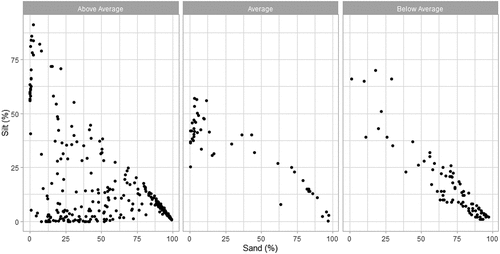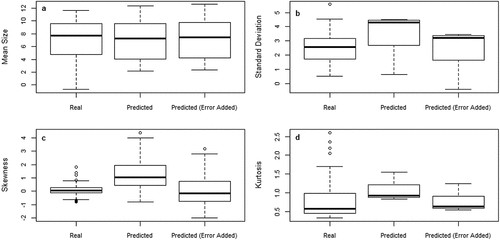Figures & data
Table 1. Data source.
Table 2. Specification of generalized linear models terms used in the analysis of sediment texture in relation to sediment grain size.
Figure 1. Variation of sediment mean size (a & b) and standard deviation (c & d) in relation to sand and silt fractions.
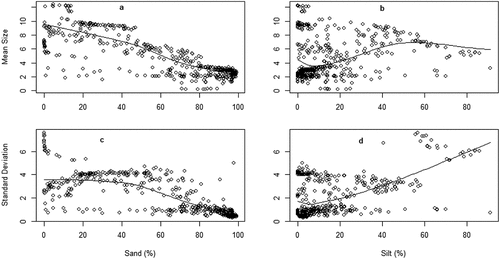
Table 3. Variation of sediment grain size parameters across the study variables.
Figure 3. Variation of sediment skewness (a & b) and kurtosis (c & d) in relation to sand and silt fractions.
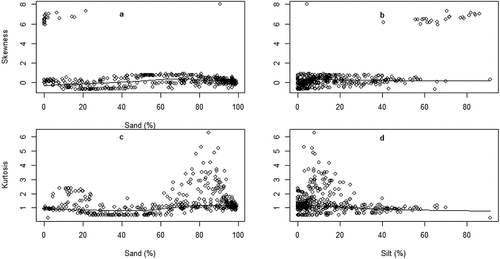
Table 4. Comparison of null to full models estimating grain size parameters from texture.
Figure 4. Variation of sediments mean size (a), standard deviation (b), skewness (c) and kurtosis (d) in relation to locality.
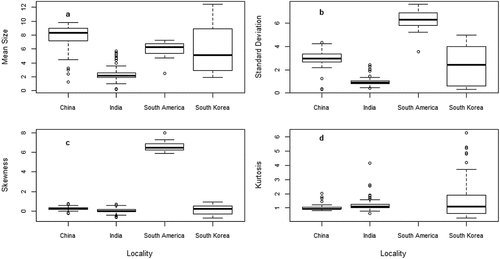
Figure 5. Variation of sediments mean size (a), skewness (b), and kurtosis (c) versus silt percentage.
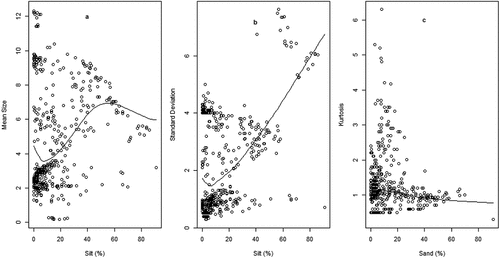
Figure 6. Variation of sediments mean size (a), standard deviation (b), and skewness (c) versus organic matter percentage.
